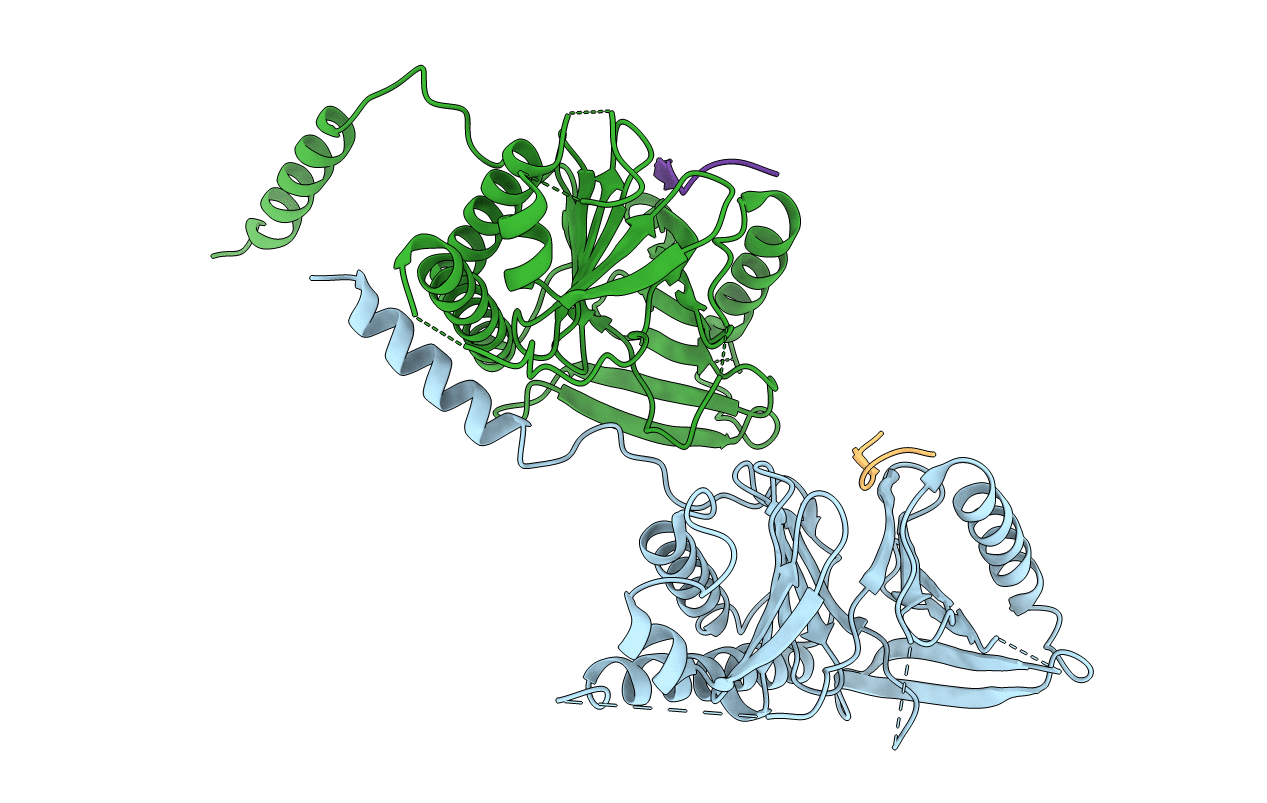
Deposition Date
2018-09-09
Release Date
2020-02-19
Last Version Date
2024-11-20
Entry Detail
PDB ID:
6MF5
Keywords:
Title:
Crystal structure of budding yeast Cdc5 polo-box domain in complex with Spc72 phosphopeptide.
Biological Source:
Source Organism:
Saccharomyces cerevisiae (Taxon ID: 559292)
Saccharomyces cerevisiae (Taxon ID: 4932)
Saccharomyces cerevisiae (Taxon ID: 4932)
Host Organism:
Method Details:
Experimental Method:
Resolution:
2.70 Å
R-Value Free:
0.26
R-Value Work:
0.23
R-Value Observed:
0.23
Space Group:
P 1 21 1


